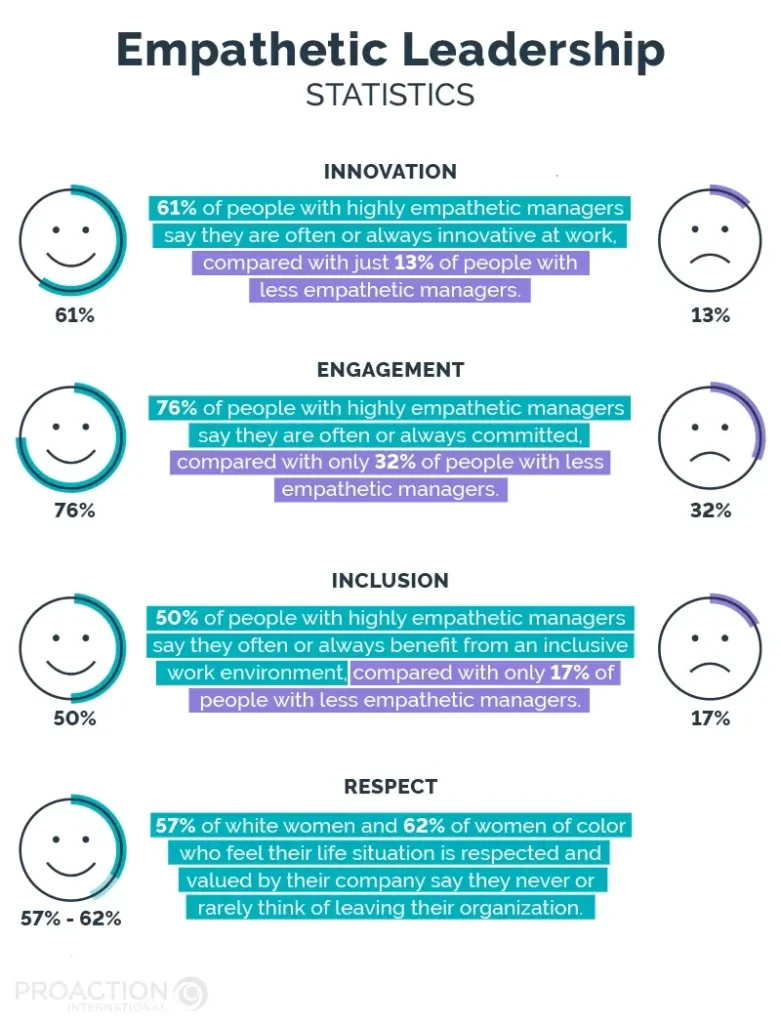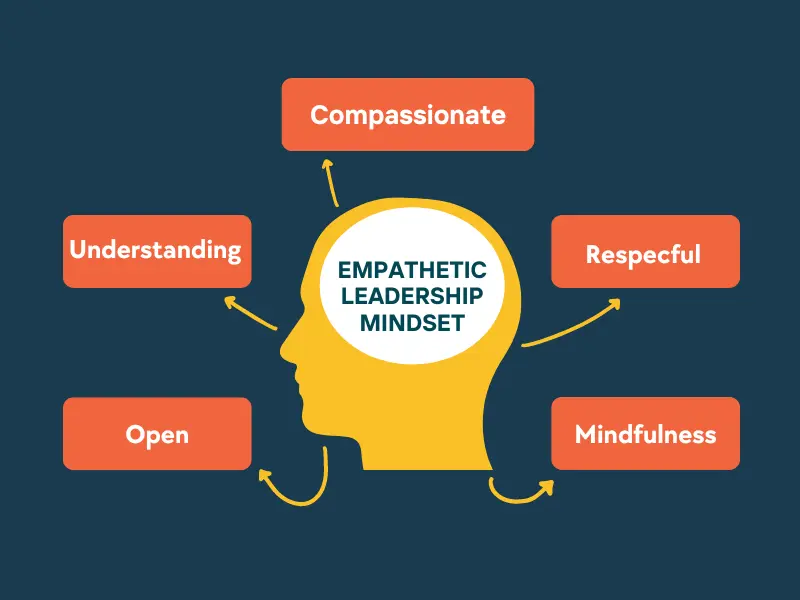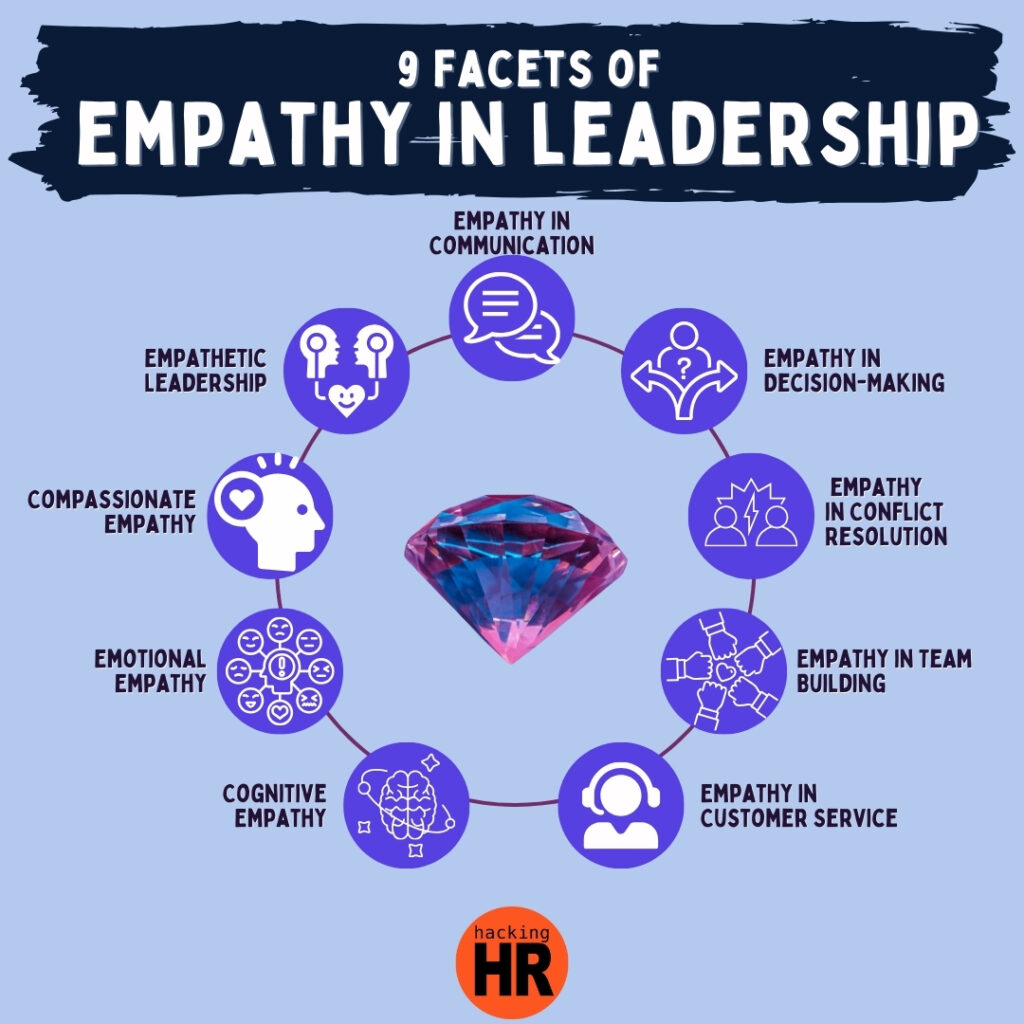The days of purely transactional hierarchies are giving way to an era of human-centric leadership, where empathy plays a fundamental role. Empathetic leadership, the ability to connect with team members on a deeper level, is no longer just a “nice-to-have” quality. It’s strategically essential. Leaders who foster trust, resilience, and collaboration outperform those who stick to rigid, authoritarian approaches.
The benefits are undeniable. Research shows that empathetic leadership results in higher retention rates, better team communication, and more cohesive collaboration. But empathy isn’t about being “soft.” It’s about balancing emotional intelligence with courageous directives and accountability. Empathy, when wielded responsibly, becomes a powerful tool to drive both human connection and business success.
Understanding What Empathetic Leadership Really Means
Empathy in leadership transcends mere good intentions. It’s about understanding and sharing the feelings, challenges, and perspectives of your team members while aligning those insights to actionable strategies. But empathy alone isn’t enough. Leaders need to differentiate between the following key concepts:
- Empathy vs. Sympathy: While sympathy expresses concern (“I feel bad for you”), empathy dives deeper. It involves true understanding (“I feel what you’re feeling”).
- Empathy vs. Emotional Intelligence: Emotional intelligence covers self-awareness, self-regulation, motivation, empathy, and social skills. Empathy is a core piece of this larger puzzle.
Empathy in action means connecting emotionally while also holding space for accountability. Leaders who embody these principles create environments of trust and performance.

Leadership Circle’s Perspective
According to Leadership Circle Profile research, empathy that operates without accountability can lead to overly kind but unproductive leadership. The key is intertwining connection with intentional, courageous decision-making for transformational outcomes.
The Pitfall of Lip Service Empathy
Empathy, when it feels performative instead of authentic, falls flat. Leaders can unintentionally over-index on kindness or avoid difficult conversations altogether, believing they’re sparing feelings while inadvertently stalling progress.
The Risks of Performative Empathy
- Avoiding Hard Truths: When leaders avoid giving constructive feedback, it creates ambiguity and resentment.
- Erosion of Trust: Teams can quickly identify insincerity, leading to disengagement.
- Missed Opportunities for Growth: Taking action requires blending empathy with tough conversations that help individuals and teams improve.
A recent Harvard Business Review study highlights how 55% of leaders overestimate their ability to practice genuine empathy. This gap between perception and reality can inhibit trust-building and lead to high turnover during periods of change or uncertainty.
Pro Tip: Use open body language—like relaxed posture and a gentle smile—to invite connection and avoid sending the wrong signals.

Leading with Empathy and Accountability
Empathy thrives when paired with accountability. Leadership Circle’s creative competency Courageous Authenticity showcases how leaders can set clear expectations while staying compassionate.
How to Balance Empathy and Accountability
- Set Crystal-Clear Expectations: Empathy doesn’t mean lowering the bar. Be transparent about goals and responsibilities.
- Provide Actionable Feedback: Deliver constructive criticism rooted in care. Position feedback as an opportunity for growth, not punishment.
- Lean on Authenticity: Be vulnerable when appropriate. Authentic leaders inspire trust by showing they’re human too.
- Use Data to Align Outcomes: Pair emotional connection with metrics to show why certain decisions matter.

Why Self-Awareness Is the Foundation of Empathy
To lead others effectively, you first need to lead yourself. Leadership Circle’s inner game research emphasizes that self-awareness is the root of emotional intelligence. Leaders who understand their triggers, assumptions, and thought patterns are better positioned to connect genuinely with others.
Ways to Develop Self-Awareness
- Identify Biases: Understand how unconscious biases might shape your interactions.
- Check Emotional Triggers: Recognize situations where you react rather than respond intentionally.
- Reflect Regularly: Practice journaling or mindfulness to deepen self-understanding.
Pro tip: If a certain tone of voice or type of criticism triggers you, create a go-to phrase like “I need a moment” to pause the conversation and regain emotional control.

Scaling Empathy Across the Organization
Empathy is contagious when modeled well. Leaders set the tone for organizational culture through their actions, not just their words. Here’s how to scale empathy as a systemic value, not just an individual trait.
Build Cultures of Empathy
- Model Empathy from the Top: Make empathy a leadership expectation, starting with executives.
- Embed Empathy into Processes: Incorporate empathetic communication in onboarding, training, and ongoing mentoring.
- Measure Leadership Effectiveness: Leverage tools like Leadership Circle Profile to track competencies like empathy and accountability.
Driving the Balance of Empathy and Action
At Leadership Circle, we help organizations cultivate leaders who embody this balance. Our programs provide leaders with the self-awareness and strategies needed to lead with connection and accountability simultaneously.
Are you ready to elevate your leadership potential? Take the next step by scheduling a consultation to explore how you can cultivate empathetic leadership in your organization. Contact us here.





I found myself nodding along throughout this entire read. It really connected with my own thoughts and experiences on the subject. It’s rare to find such well-articulated insights these days.
Your blog is a treasure trove of valuable insights and thought-provoking commentary. Your dedication to your craft is evident in every word you write. Keep up the fantastic work!